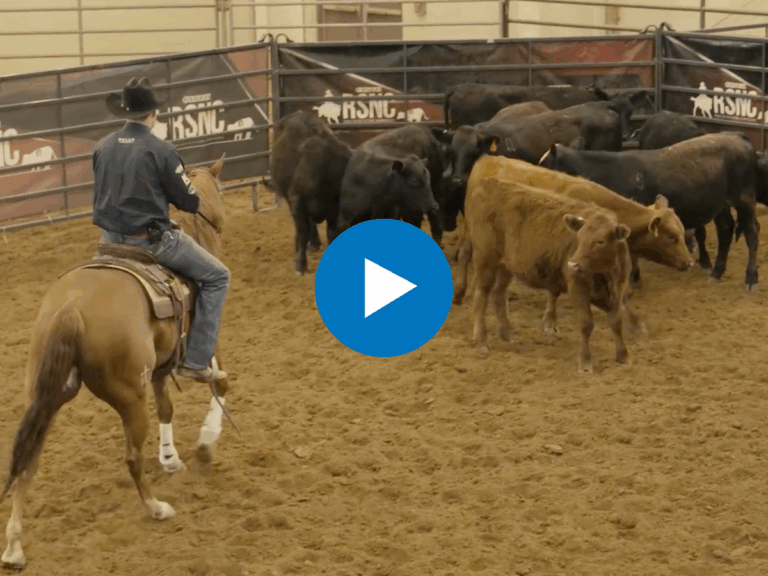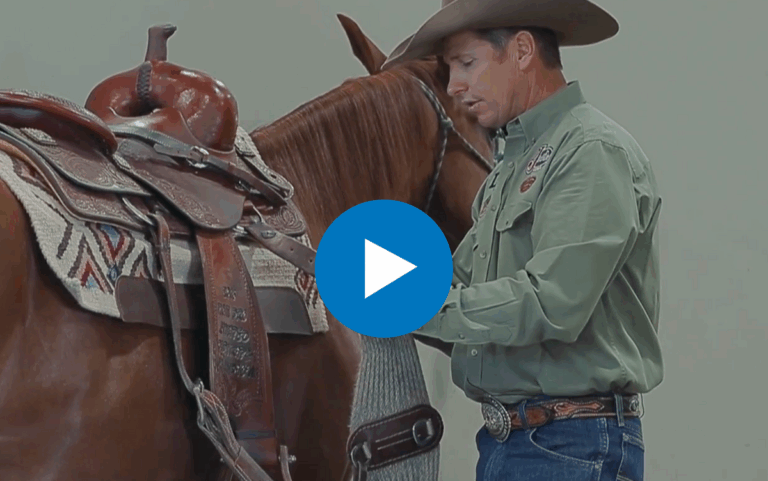You might think of horsemanship as “just a pattern class.” While it’s true—the class’ placing is mostly based on a pattern—the heart of the class has a foundation of functional riding.
Read More: Improve Your Horsemanship
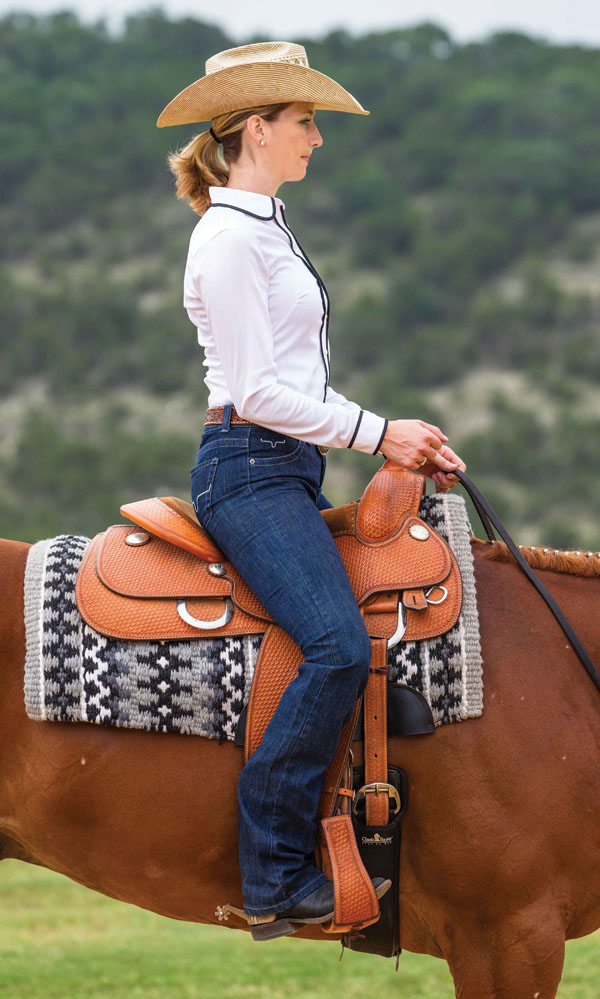
You’re probably familiar with the phrase “form to function” in reference to halter horses, but I also use it a lot in explaining the way I teach horsemanship. A rider might look beautiful on a horse, but is she effectively communicating with her horse? To really stand out in any class, but especially horsemanship, you must be effective on your horse—your form must enhance your horse’s function. It can be hard to tell the difference at first glance, but when you have great position and feel, that translates to a strong connection with your horse, which translates to a better performance.
Here, I’ll explain my form-to-function philosophy, as well as offer a few exercises to enhance your ability to effectively communicate with your horse and have a stronger connection with him. My advice here is mostly rider-based rather than focusing on training your horse to improve the maneuvers.
Proper Body Position Is a Result of Functional Riding
Proper position is directly related to how functional it is. When you ask your horse to perform a maneuver with maximum athletic ability, you must be in a good, balanced position—your form allows his function.
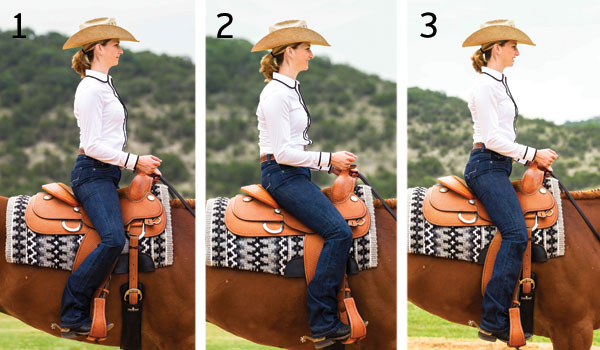
You might have your chin up, shoulders square, and heels down, but for example, if you’re riding on your toes, you won’t be balanced. The form might be “correct,” but it’s not functional. You’ll likely have to squeeze your horse with your lower legs just to stay on. Proper position should be a natural part of the way you ride.
Balanced, effective position starts with your legs. If they’re too far in front of you, too far behind you, way too far off your horse, or you’re always over squeezing with your legs, it puts your horse out of balance, and you’ll be behind or in front of your horse’s motion. Balanced legs, with your heels stretching down to make a fairly straight line between the heel, hip, shoulder, and the ear puts you in position to ride effectively.
Here are five basic exercises to achieve functional horsemanship. Note that my instructions focus on helping you, the rider, become more effective and get the most out of the maneuvers rather than training skills in your horse. I recommend riding two-handed for these drills, with a bit your horse responds to.
Two-Point
Riding in a two-point position (raised off your seat, balanced slightly more forward, using your leg strength for balance), even in a Western saddle, establishes proper leg position and leg strength. See the top-left photo on page 51 for an example. Practice riding in two-point at a jog and an extended trot on circles, figure eights, serpentines, and straight lines. Reach your heels down to help yourself balance, as you raise your bottom from the saddle. You’ll feel the burn in your leg muscles, and your additional strength will serve your goal to ride effectively, with your form enhancing your horse’s function.
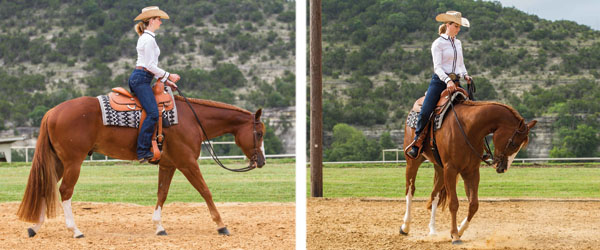
One tip: If you tend to fall forward or backward, you can identify where you need to adjust your feet and legs to stay in proper position. If you tend to lean back, your legs are too far in front of you; if you usually fall forward, they’re too far behind you.
Circles
In a good circle, your horse is underneath you, with a nice, balanced shape to his body. Many horses work better to one direction over the other. Horsemanship classes offer an advantage over rail classes because you can move your horse forward a little bit to achieve better cadence and reduce that disparity. However, if your horse goes one way better than the other in all maneuvers, consider your form and position on your horse. Are you leaning harder on one stirrup? Are your shoulders uneven? These asymmetrical tendencies will affect your horse’s performance.
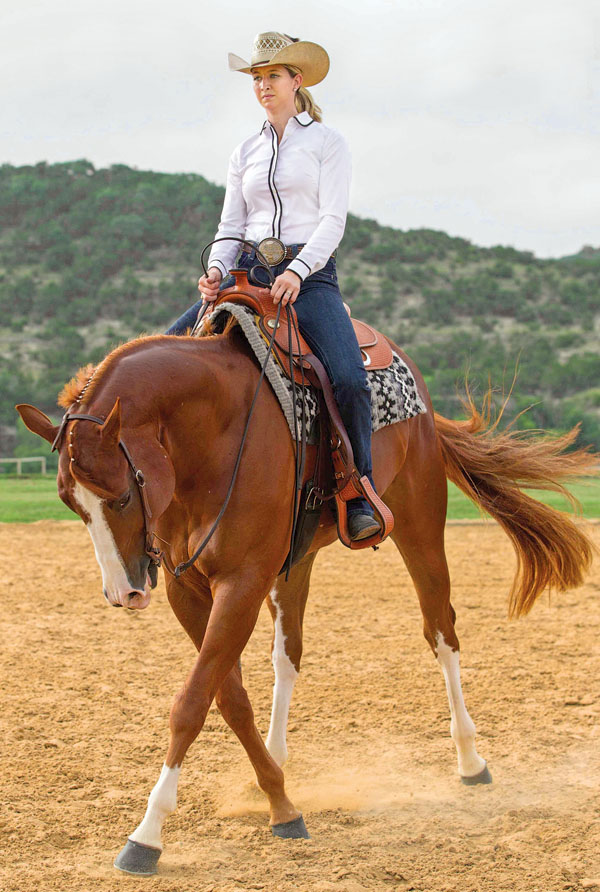
Trotting a circle, push with your outside leg. Most horses will want to lope off when you do that, but control your horse’s forward motion. I liken putting your leg on your horse to plugging your phone into your computer. You’re syncing everything up, but it doesn’t mean something is happening. The phone and computer are just getting ready to transmit information. So when you put your leg on the horse, you want your horse to start shaping his body the way you ask him to. When you push with your leg in a rhythm, your horse’s cadence will follow that rhythm.
Two-Tracking
While two-tracking, you learn how your horse’s hip moves in response to pressure, how his ribcage shapes, how his neck gets and stays soft, and how your horse’s mouth and jaw become soft and square. All of these responses contribute to a balanced horse.
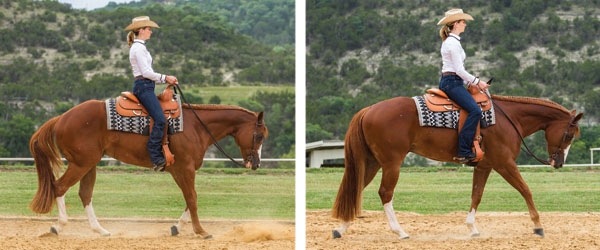
You can also use the exercise to increase your effectiveness as a rider. First, pay attention to your rhythm during this maneuver. Ride in tempo with your horse’s cadence, and you can control his tempo as well as his hips, rib cage, and face. The better you can keep that cadence, the better your hands and your legs develop, and the better you communicate and connect with your horse. Additionally, a two-track requires strength and coordination on your part that’ll build as you practice the maneuver.
Stops
Before you start working on the stop maneuver, think about keeping good contact between your legs and your horse. I’m not talking about a spur stop, which means pressing into the horse with your spur to cue for a stop. I don’t use this cue because it interferes with other cues and causes confusion.
The contact between your legs and your horse helps keep the horse at a proper rhythm, no matter the gait. Keep your legs still, with your heels down. If you have a hard time keeping your feet in the stirrups with your legs on your horse and you have to fish for them, your stirrups might be too long. Try riding in a slightly shorter stirrup so you can really feel when your horse’s back starts lifting up in a stride and his shoulder gets engaged. This feel is so important for the timing of asking for a stop.
With a soft feel on your horse’s belly and your horse moving forward, notice when the horse’s motion comes up into your feet as you press into the stirrups. When the pressure comes down from your foot, that’s when you ask for the stop. Practice this at every gait: the walk, trot, and lope.
Once you can feel the balance of the rhythm, and can hold a steady rhythm, things will start falling into place.
Read More: 10 Things All Riders Should Do
Extended and Slow Gaits
Speed control, in terms of transitions up and down, will test your position, too. One example is lengthening and shortening the walk stride, to see how far you can go without breaking into a jog.
To do this, you’ll tap with your legs—not squeeze. It helps engage your horse from your stirrup to your hand. Hold your horse’s face, and drive his body softly into the bridle with each step. Notice what happens when you engage your leg and pick up on the reins. What’s your horse’s reaction? If his head comes up, you might need to communicate more strongly with your legs in a rhythm. Balance is the goal here. If you use too much hand and not enough leg, your horse will depend on your hand, which means your horse will probably speed up when you release your hold on the bridle. The proper balance of leg pressure and bit pressure will teach your horse to lift through his withers and back and create more self-carriage, which will give your horse the desired balance when you release your hold or bump of the bit.
Learn More: Horse&Rider OnDemand
Practice varying stride lengths at the trot, too. Once you’ve mastered this speed control at the walk and the trot, you can move on to the lope. But be sure to spend plenty of time at the walk and jog to master those gaits first.
Becoming a more effective rider is a very simple process mentally, but it’s a lot of work physically. Correct repetition with positive reinforcement will garner the correct feel, which can take a long time. But once you get it, you’ll be able to ride any horse and get the most out of him because you understand how to operate whatever horse you’ve got—no matter the discipline.
Brad Jewett, Boerne, Texas, is an AQHA Professional Horseman and has been training horses for 23 years. He started in the reining and began training all-around horses 15 years ago. He’s guided riders to many accomplishments, including the 2010 and 2011 AQHYA World Champions in horsemanship, as well as multiple other titles.

